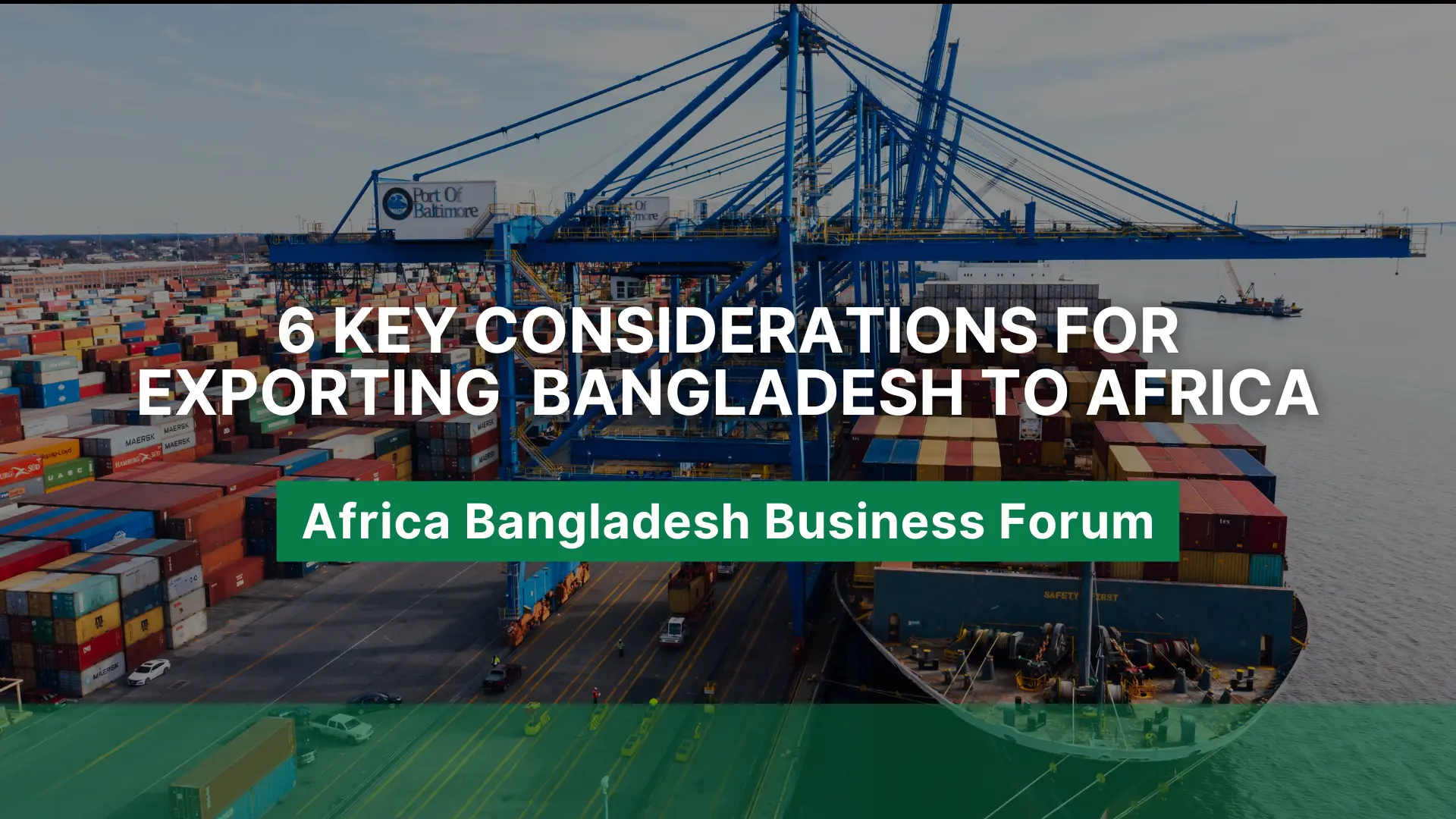The African continent is becoming one of the most important growth markets for the global apparel industry. For Bangladeshi RMG exporters, this offers a chance to expand beyond traditional destinations and tap into a market full of new opportunities. The demand for ready-made garments is rising in both established economies like South Africa and emerging markets such as Ethiopia and Ghana.
The opportunity is exciting, but success is not automatic. Each African market comes with its own policies, cultural differences, and logistical challenges. Exporters must think ahead and prepare for different customs procedures, trade laws, and consumer preferences. Entering without research can lead to wasted investment and damaged relationships.
This article gives a clear checklist of the top 10 considerations to help you plan effectively, reduce risks, and build a profitable presence in Africa.
1. In-Depth Market Research and Selection
Africa is not a single market. Each country has unique economic conditions, levels of development, and trade regulations. Market research is the first step before committing resources. For example, South Africa has a more mature apparel market, with higher competition from local brands and international players, while Ethiopia and Ghana are still developing and may offer better entry points for new exporters.
Understanding consumer preferences is equally important. Some countries value luxury fashion, while others focus on low-cost ready-made garments. Studying purchasing power, cultural norms, and seasonal trends will help you adapt your offering to fit each market.
2. Product Adaptation and Compliance
Selling the same design everywhere rarely works in Africa. Product adaptation is key. Hot climates may require lightweight fabrics, while some cultures prefer modest clothing styles. Colors and patterns that appeal in Bangladesh might not be popular in certain African regions.
Compliance is also critical. Every country has its own quality standards, labeling laws, and certification requirements. Failing to meet these can result in goods being held at customs or even rejected. Clear, accurate labels showing fabric content, size, and origin are often mandatory.
3. A Robust Pricing and Costing Strategy
Pricing mistakes can destroy profitability. Exporters must calculate the full landed cost, which includes production, transport, insurance, tariffs, and any agent or distributor fees. Ignoring hidden costs can lead to selling at a loss.
A competitive analysis will reveal how your prices compare to local brands, other international suppliers, and the widespread second-hand clothing market. In some African countries, second-hand imports are a major competitor, making it even more important to find the right balance between price and quality.
4. Logistics and Supply Chain Management
Shipping routes between Bangladesh and Africa can be complex. Direct routes are rare, meaning goods often need transshipment, which adds time and cost. Careful supply chain planning will reduce delays.
Once the goods arrive, the last-mile delivery can be challenging. Some ports face congestion, while inland roads and railways may be underdeveloped. Working with a local partner or logistics provider who understands the system is vital for on-time delivery.
5. Understanding Tariffs, Regulations, and Trade Agreements
African countries often have high tariff rates on textile imports. Some also impose non-tariff barriers like quotas or extra inspections. Exporters must fully understand these rules to avoid costly mistakes.
Keeping track of Free Trade Agreements (FTAs) can create an advantage. Any trade deal between Bangladesh and African nations that reduces tariffs or simplifies customs procedures can improve your competitiveness.
6. Secure Payment Methods and Financial Risk
Exporters should never take payment security lightly. Using a Letter of Credit (L/C) for new buyers is one of the safest ways to ensure payment. This guarantees you will be paid once agreed shipping and documentation conditions are met.
Currency fluctuations can also be a risk in African markets. Some countries have unstable exchange rates, which can reduce your profit margin if not managed correctly. Fixed-rate contracts or pricing in stable currencies like the US dollar can help.
Your Strategic Partner: How ABBF Helps You Navigate These Considerations
Managing all these factors can be overwhelming for a new exporter. The Africa Bangladesh Business Forum (ABBF) acts as a business bridge between exporters and African markets. It offers direct guidance and builds valuable connections.
The ABBF provides market intelligence, helping exporters choose the best target country and adapt their products for local tastes. It also facilitates B2B matchmaking by connecting members with vetted agents, importers, and logistics providers, reducing risk and saving time.
The forum also advises on trade policies, tariffs, and logistics to help avoid common pitfalls. By fostering trust between members, ABBF makes it easier to secure deals, manage payment methods, and establish joint ventures with reliable local partners.
Frequently Asked Questions
Q: What is the biggest logistical challenge when exporting from Bangladesh to Africa?
A: The lack of direct shipping routes is a major issue. Most goods require transshipment, which increases costs and causes delays.
Q: How important are tariffs when pricing products for the African market?
A: Very important. High import duties can make goods less competitive. These must be included in the landed cost calculation.
Q: Is it necessary to adapt garment designs for African consumers?
A: Yes. Climate, culture, and consumer preferences differ across Africa, so product adaptation improves market acceptance.
Q: What is the most reliable payment method for new African buyers?
A: A confirmed Letter of Credit (L/C) from a reputable bank is safest for first transactions.
Q: Why is finding a good local partner important?
A: A reliable partner can solve customs procedures issues, handle last-mile delivery, and share local market insights.
Conclusion
Exporting ready-made garments from Bangladesh to Africa can be profitable if done with careful planning. Success depends on strong market research, effective product adaptation, precise pricing, smooth logistics, and safe payment methods.
The exporters who win in Africa are the ones who prepare well, understand tariffs and trade laws, and build trust with local partners.
Ready to take the next step? Connect with the Africa Bangladesh Business Forum (ABBF) to gain the insights, contacts, and confidence you need to grow your RMG exports in Africa.


